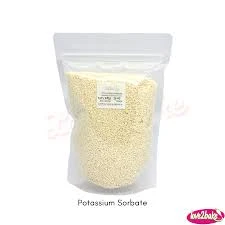
nbr nitrile rubber
Understanding NBR (Nitrile Butadiene Rubber) Properties, Applications, and Benefits
Nitrile Butadiene Rubber, commonly known as NBR, is a synthetic rubber copolymer of acrylonitrile and butadiene. It has gained popularity in various industries due to its remarkable resistance to oil, fuels, and other chemicals, making it an ideal material for numerous applications. This article delves into the properties, benefits, and uses of NBR, providing insight into why it is a preferred choice in critical manufacturing processes.
Properties of NBR
One of the defining characteristics of NBR is its outstanding resistance to petroleum-based products, including oils and greases. This property originates from the high acrylonitrile content, which can vary from 18% to 50%. A higher acrylonitrile content enhances the rubber's oil resistance, making it suitable for automotive and industrial applications where exposure to hydrocarbons is common.
In addition to its chemical resistance, NBR exhibits excellent mechanical properties, including tensile strength, elongation, and abrasion resistance. Its durability allows it to withstand wear and tear, contributing to the longevity of products made from this rubber. Furthermore, NBR maintains its elasticity and flexibility even at low temperatures, typically down to -40°C (-40°F). This thermal stability broadens its uses in colder climates and applications where temperature fluctuations occur.
Understanding NBR (Nitrile Butadiene Rubber) Properties, Applications, and Benefits
The unique combination of properties in NBR translates to several benefits, making it a versatile material in manufacturing. The first major benefit is its ability to form seals and gaskets that are resistant to automotive fluids, therefore significantly reducing the risk of leaks and failures in machinery and vehicles. Additionally, NBR's resistance to aging and ozone degradation can extend the life of products exposed to outdoor elements.
nbr nitrile rubber

Another advantage of NBR is its affordability compared to other specialty rubbers, such as fluorocarbon or silicone rubber. This cost-effectiveness makes it an attractive option for manufacturers looking to balance quality and budget constraints. Moreover, NBR can be easily processed using various industrial methods such as extrusion, molding, and calendering, allowing for flexibility in design and application.
Applications of NBR
Due to its robust properties, NBR is utilized across a variety of industries. In the automotive sector, it is commonly found in fuel hoses, seals, grommets, and O-rings, where resistance to petroleum products is essential. NBR is also used in manufacturing diaphragms, rubber bands, and conveyor belts in industrial applications, ensuring that machinery operates smoothly.
Additionally, the aerospace and medical industries have recognized the advantages of NBR. In aerospace, it is used for sealing systems in fuel and hydraulic components, while in medical applications, it serves in the production of drug delivery systems and various laboratory equipment. Its non-allergenic properties make NBR suitable for certain medical uses, thereby expanding its role in healthcare.
Conclusion
Nitrile Butadiene Rubber (NBR) stands out as a powerful material in the realm of synthetic rubbers. Its excellent resistance to oils and chemicals, combined with appealing mechanical properties and cost-effectiveness, makes it a staple in many industries. As technology advances and new applications emerge, NBR will likely continue to play a crucial role in the development of innovative products that meet the demands of modern society. For manufacturers and engineers, understanding and utilizing the benefits of NBR ensures high-performance solutions that withstand the test of time and conditions.
-
Pure Sodium Dichloroisocyanurate Dihydrate | Powerful DisinfectantNewsAug.29,2025
-
Industrial Chemicals: Quality & Purity for Every IndustryNewsAug.28,2025
-
Nitrile Rubber Honoring Strict Production StandardsNewsAug.22,2025
-
Aspartame Ingredients Honoring Food Safety ValuesNewsAug.22,2025
-
Fertilizer for Balanced Plant NutritionNewsAug.22,2025
-
Cyanide Gold Processing with High Purity AdditivesNewsAug.22,2025
-
Formic Acid in Textile Dyeing ApplicationsNewsAug.22,2025
Hebei Tenger Chemical Technology Co., Ltd. focuses on the chemical industry and is committed to the export service of chemical raw materials.
-

view more DiethanolisopropanolamineIn the ever-growing field of chemical solutions, diethanolisopropanolamine (DEIPA) stands out as a versatile and important compound. Due to its unique chemical structure and properties, DEIPA is of interest to various industries including construction, personal care, and agriculture. -

view more TriisopropanolamineTriisopropanolamine (TIPA) alkanol amine substance, is a kind of alcohol amine compound with amino and alcohol hydroxyl, and because of its molecules contains both amino and hydroxyl. -

view more Tetramethyl Thiuram DisulfideTetramethyl thiuram disulfide, also known as TMTD, is a white to light-yellow powder with a distinct sulfur-like odor. It is soluble in organic solvents such as benzene, acetone, and ethyl acetate, making it highly versatile for use in different formulations. TMTD is known for its excellent vulcanization acceleration properties, which makes it a key ingredient in the production of rubber products. Additionally, it acts as an effective fungicide and bactericide, making it valuable in agricultural applications. Its high purity and stability ensure consistent performance, making it a preferred choice for manufacturers across various industries.





